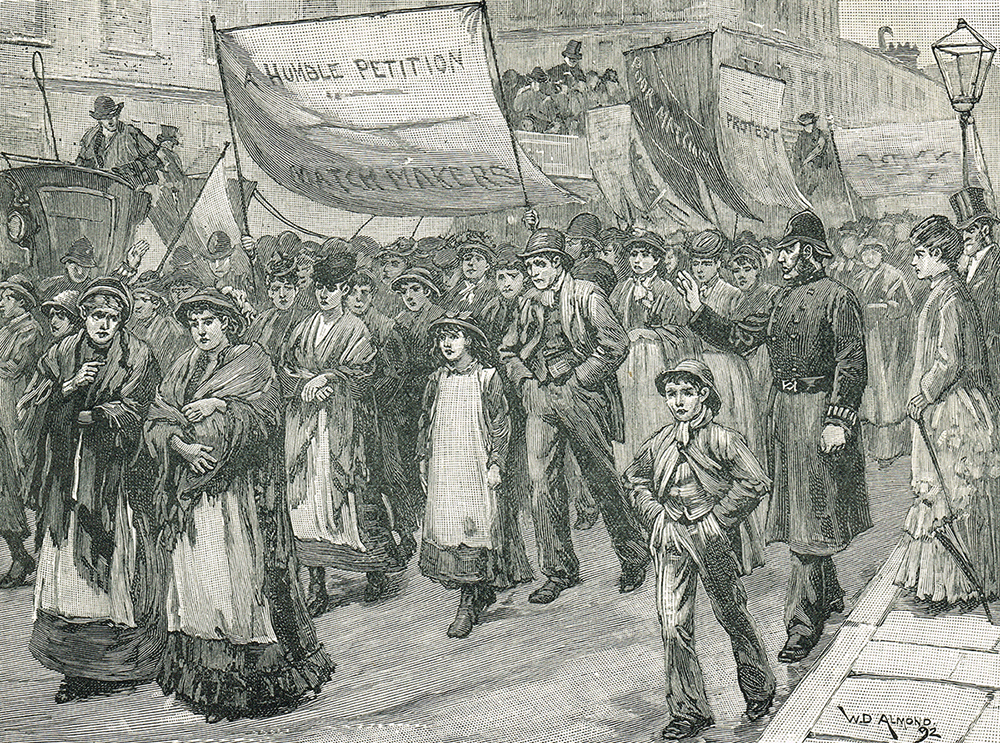
An illustration showing match workers protesting about a tax on matches, 24th April 1871, by William Douglas Almond (1866-1916) from Cassell’s Century Edition History of England, published circa 1901. © Alamy images
This illustration shows a procession of match makers marching to present a petition to Parliament in Westminster against the proposed tax by Chancellor Robert Lowe. A halfpenny tax was to be raised on a box of matches and one penny on vestas (type of wax match). The tax was seen as particularly unfair on some of the poorest workers in the country. Matches were needed to light the fires to heat homes and cook food. They were needed to light street gas lamps and the candles that people depended on for light. It would have further reduced the purchasing power of the meagre wages of the match workers. Plans for the tax were soon dropped in a storm of opposition.
Look at Source 1a
- How would you describe the people on this march?
- What does the wording on the banner infer?
- How does the picture challenge views about protest by unskilled working women?
- How are the marchers controlled?
- Can you find out more about this protest against the match tax in 1871?
